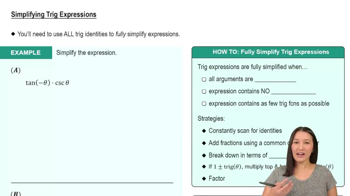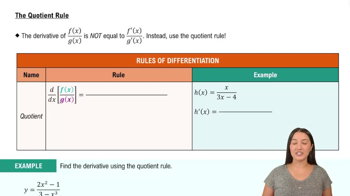Finding derivatives from a table Find the values of the following derivatives using the table. <IMAGE>
a. d/dx (f(x)+2g(x)) |x=3
 Verified step by step guidance
Verified step by step guidance Verified video answer for a similar problem:
Verified video answer for a similar problem:



 3:59m
3:59mMaster Derivatives of Linear Functions with a bite sized video explanation from Patrick
Start learning